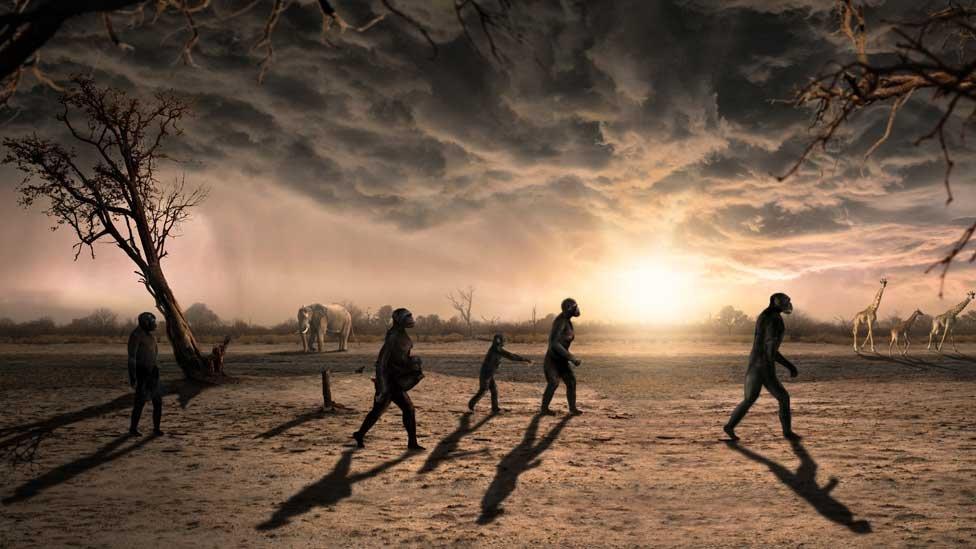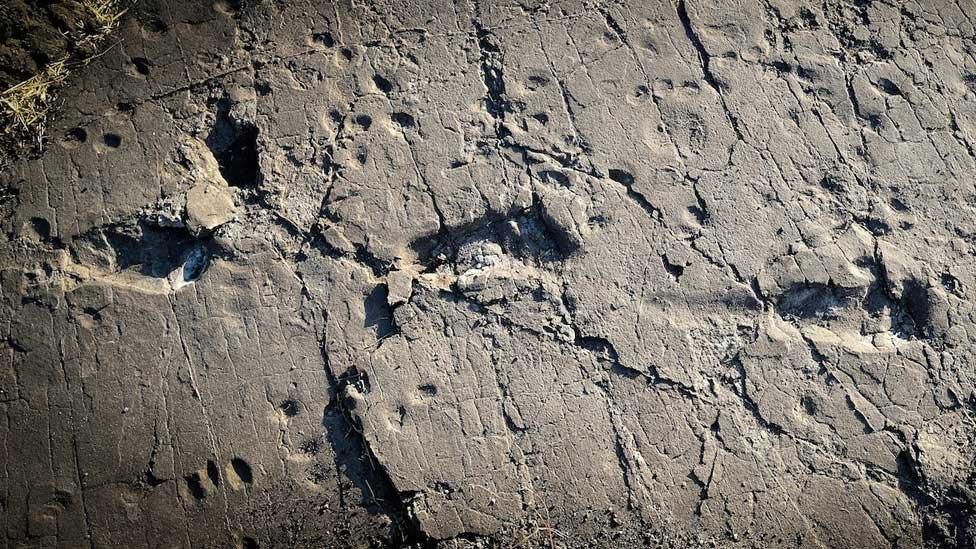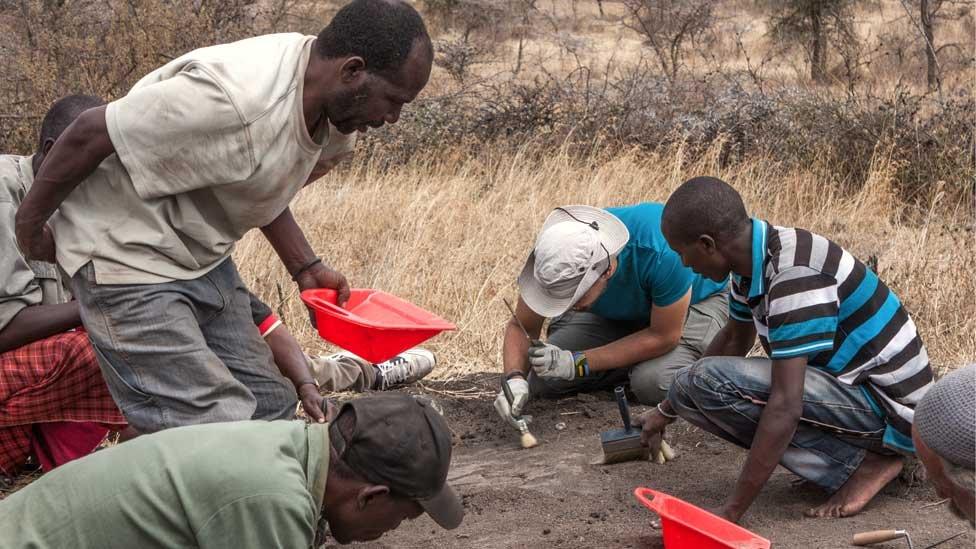Fossil footprints tell story of human origins
- Published

The footprints may have been made by a male walking with smaller females and juveniles
Footprints made by early humans millions of years ago have been uncovered in Tanzania close to where similar tracks were found in the 1970s.
The impressions were made when some of our distant relatives walked together across wet volcanic ash.
Their makers, most likely Australopithecus afarensis, appear to have had a wide range of body sizes.
Scientists say this gives clues to how this ancient species of human lived.
Australopithecus afarensis is one of the longest-lived and best-known early human species.
The fossil of "Lucy", a young adult female who lived in Ethiopia 3.2 million years ago, is perhaps the most famous individual.
The newly discovered footprints may have been made by a male walking with smaller females.
"This novel evidence, taken as a whole with the previous findings, portrays several early hominins moving as a group through the landscape following a volcanic eruption and subsequent rainfall. But there is more," said lead researcher Prof Giorgio Manzi, director of the archaeological project in Tanzania.
"The footprints of one of the new individuals are astonishingly larger than anyone else's in the group, suggesting that he was a large male member of the species.
"In fact, the 165cm stature indicated by his footprints makes him the largest Australopithecus specimen identified to date."
Gorilla-like lifestyle
In 1976, preserved footprints thought to be made by Australopithecus were discovered at a site in Laetoli, Tanzania.

The footprints were made in volcanic ash
At 3.66 million years old, they are the oldest documented bipedal footprint trails.
Now, the discovery of a second set of footprints has been revealed in the journal, eLife, external.
"Now that we've found a new set of footprints it opens up a completely different window and there could be a number of new possibilities to study what is a photograph in time of the everyday life of this species," said Jacopo Moggi-Cecchi of the University of Florence.
The tracks were found during excavations for a museum only 150m south of the original discovery.
The researchers, based in Italy and Tanzania, think the two sets could belong together, giving clues to the lifestyle of Australopithecus.
"A tentative conclusion is that the group consisted of one male, two or three females, and one or two juveniles, which leads us to believe that the male - and therefore other males in the species - had more than one female mate," said Dr Marco Cherin, director of the school of paleoanthropology at the University of Perugia.
The finding of a male perhaps walking with several females could mean their social structure was "closer to a gorilla-like model than to chimpanzees or modern humans".

Other prints were found at the site - including those of a giraffe, rhinoceros and prehistoric horses
In gorillas, one male and a number of females form a mating and child-rearing group.
The study, external also raises questions about how human feet were made for walking.
Bipedal walking
Australopithecus were capable of walking upright on two legs, but we don't know how much they resembled modern humans in the way they walked.
Prof Robin Crompton of the University of Liverpool, who is not connected to the study, said the latest footprints will give more information, once statistical work is done.
"Some people have argued that they have a slightly different gait, but I don't think there's any good evidence for that," he told BBC News.
"If humans have been walking the same way as we do now for more or less 3.65 million years, and human ancestors - in another genus - Australopithecus - then that's really fairly exciting."
Follow Helen on Twitter, external.